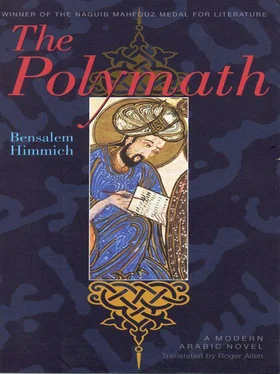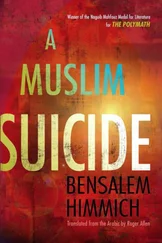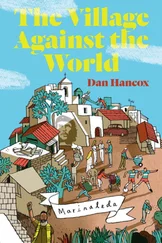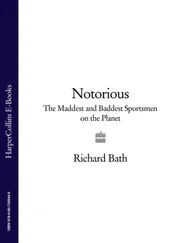Fatimi ‘Ubaydi dynasty:the Fatimi dynasty was founded by ‘Ubaydallah who claimed descent from ‘Ali. Moving to North Africa in the early tenth century, he established a base for the Shi‘ite cause, beginning in Morocco and spreading eastward. In 358/969, Jawhar, the general of ‘Ubaydallah’s descendant, al-Mu‘izz, entered FUSTAT. The Fatimi dynasty of Shi‘ite caliphs remained in power in Cairo until 567/1171.
Fayyum:a depression and oasis filled with lush vegetation to the southwest of Cairo.
Fustat:taking its name from fossata (the Latin word for ‘trench’), this is the oldest part of Cairo, to the south of the modern city.
Granada, Banu Ahmar:The Banu Ahmar gave their name to one of Islam’s most spectacular monuments, the Alhambra (al-Hamra’—‘the Red’) Palace in Granada, Spain.
Great Plague:known in Europe as the ‘Black Death,’ bubonic plague struck Cairo and various places in the Middle East off and on throughout the Middle Ages.
Hafsi, ‘Abd al-Wadi, and Marini regimes:these are the names of three of the dynasties who were continually intriguing against each other during the earlier part of Ibn Khaldun’s career in the Maghrib region. The Hafsis (Banu Hafs) were based in Tunis, the ‘Abd al-Wadis in Tilimsan (Tlemcen), and the Marinis (Banu Marin) in Fez.
al-Hakim (d. 411/1021):the Fatimi caliph who reigned from 385/996 to 411/1021. He suffered from a mental disorder, and his caliphate was characterized by the large number of extraordinary decrees that he issued — he declared night to be day, closed public baths, forbade Egyptians from going on the pilgrimage to Mecca, and so on. While it appears that he was assassinated on the order of his sister, Sitt al-Mulk, a group of his devotees fled to the mountains of Syria. Known as the Druze, they believe that al-Hakim is in fact in occultation.
al-Hallaj:one of the most famous figures in the history of Sufism (Islamic mysticism). After being convicted of heresy for proclaiming the phrase “Ana-l-haqq” (Ί am the truth’) during an ecstatic trance, he was executed in 309/922.
Ibn al-‘Arabi, Ibn Sab‘in, Ibn Qasiyy:three of the most controversial figures in Maghribi Sufism. All three were born in al-Andalus. Ibn al-‘Arabi (d. 638/1240), author of Fusus al-hikam (‘Bezels of Wisdom’) and al-Futuhat al-makkiya (‘Meccan Conquests’) is the most renowned of the three (his tomb in Damascus is still a site of pilgrimage); Ibn Sab‘in ( Budd al-‘arif , ‘Temple of the Knower’) was born in Murcia and died in Mecca in 668/1270; Ibn Qasiyy ( Khal‘ al-na‘layn , ‘Removal of Sandals’) participated in intrigues during the time of the ALMOHAD dynasty and was assassinated in 546/1151.
Ibn ‘Arafa (d. 803/1401):MALIKI JUDGE and imam of the mosque in Tunis who successfully intrigued to have IBN KHALDUN removed from his position at the court of SULTAN ABU AL-‘ABBAS, resulting soon afterward in the historian’s departure for Cairo.
Ibn Battuta and Ibn Juzayy:Ibn Battuta of Tangiers was one of the most famous travelers in Arab-Islamic history. Setting out on the pilgrimage to Mecca, he traveled between 725/1325 and 750/1349 and eventually reached as far as China. Following his return to his native city, he made a further trip to Niger. He died in 779/1377. Ibn Juzayy was his amanuensis.
Ibn Hazm of Cordoba (d. 456/1064):renowned Andalusian jurist and poet, who also wrote Arabic’s most famous essay on love-theory, Tawq al-hamama (‘The Dove’s Neckring’).
Ibn Khaldun (732–808/1332–1406):His full name was Wali al-Din ‘Abd al-Rahman ibn Muhammad ibn Muhammad ibn Abi Bakr Muhammad ibn al-Hasan. He was occasionally also called ‘al-Hadrami,’ a reference to his family’s purported ancestry in the Hadramawt region of Southern Arabia. In this novel, the historian is called both Ibn Khaldun and ‘Abd al-Rahman, and is also addressed by his peers as Wali al-Din.
Ibn Qayyim al-Jawziya (d. 751/1350):a jurist and theologian of Damascus, he supported the doctrines of his contemporary, TAQI AL-DIN IBN TAYMIYA. The Rawdat al-muhibbin (‘Meadow for Lovers’) is one of the most famous works on the topic in Arabic.
Ibn Sharaf (444–533/1052–1139):a renowned figure, poet and philosopher, at the court of al-Mu‘tasim ibn Sumadih (d. 484/1091), a member of the Tujibid dynasty who ruled from Almeria in Spain.
Imam al-Shafi‘i (d. 204/820):founder of the Shafi‘i school of Islamic law.
Information on Ibn Khaldun and His Travels East and West (al-Ta’rif bi-Ibn Khaldun wa-rihlatihi gharban wa-sharqan) :IBN KHALDUN’S most significant extant works (all of them mentioned during the course of this novel) are 1) his work of history, Kitab al-‘ibar (‘Book on the Lessons of History’); 2) al-Muqaddima (‘Introduction to History’), the theoretical preface to the history; and 3) al-Ta’rif bi-Ibn Khaldun wa-rihlatihi gharban wa-shar-qan (‘Information on Ibn Khaldun and His Travels East and West’), an autobiography.
Islamic calendar:The Islamic calendar is lunar rather than solar. It is dated from the hijra (emigration) of the Prophet Muhammad from Mecca to Medina in the year 622 of the Christian era.
‘Izz al-Din ibn al-Athir (d. 630/1233):historian and author of al-Kamil fi-l-tarikh (‘The Complete Work on History’).
al-Jahiz (d. 255/869):one of Arabic’s most famous scholars, al-Jahiz wrote on a vast number of subjects in the form of essays and anthologies and was also a major contributor to the development of an Arabic prose style and critical writing.
Kinana tribe:a confederacy of tribes in Arabia, whose territory was in the neighborhood of Mecca.
Luqman:a legendary figure in Arabian lore, noted for both his longevity and a collection of fables attributed to him.
Maghrib:word in Arabic meaning ‘the West.’ While today it is used to refer specifically to Morocco and, in broader terms, to Morocco, Algeria, and Tunisia, in IBN KHALDUN’S time it referred to the general region to the west of Egypt.
Maliki judge:IBN KHALDUN had judicial authority within the Maliki school of law, one of the four principal schools of Islamic jurisprudence (the others being the Hanafi, Shafi‘i, and Hanbali). This school was named for its founder, Malik ibn Anas, the author of a renowned early work of law, al-Muwatta (‘The Smooth Path’), which IBN KHALDUN utilized in his teaching.
Mamluks:Mamluk is an Arabic word meaning ‘slave.’ The Mamluk dynasty that ruled Egypt, eligibility for which involved being born a slave and then manumitted, is subdivided into two periods: the Bahri period, 648–791/1250–1389, and the Burji period, 784–922/1382–1517.
al-Mas‘udi (d. 345/956):a famous historian, whose major work is Muruj al-Dhahab (‘Golden Prairies’).
Mawlay Idris:this is the name of an important shrine close to the Roman site of Volubilis in Morocco. It is named for Idris, a descendant of the fourth Caliph ‘Ali who fled to the West and established himself in Morocco. He died in 175/791.
mihrab:the niche in the wall of a mosque that indicates the qibla (direction of Mecca).
Mintash (d. 793/1393):one of the two primary leaders of the rebel lion against SULTAN BARQUQ (791–792/1389–90). His full name was Amir Tumarbugha al-Afdali. Before the rebellion, he was serving as viceroy of the region of Malatya. Like his co-conspirator, YALBUGHA AL-NASIRI, he advocated executing the deposed SULTAN BARQUQ. However, while AL-NASIRI was restored to his former positions after being pardoned by the restored sultan, Mintash continued his revolt in Syria.
Читать дальше












